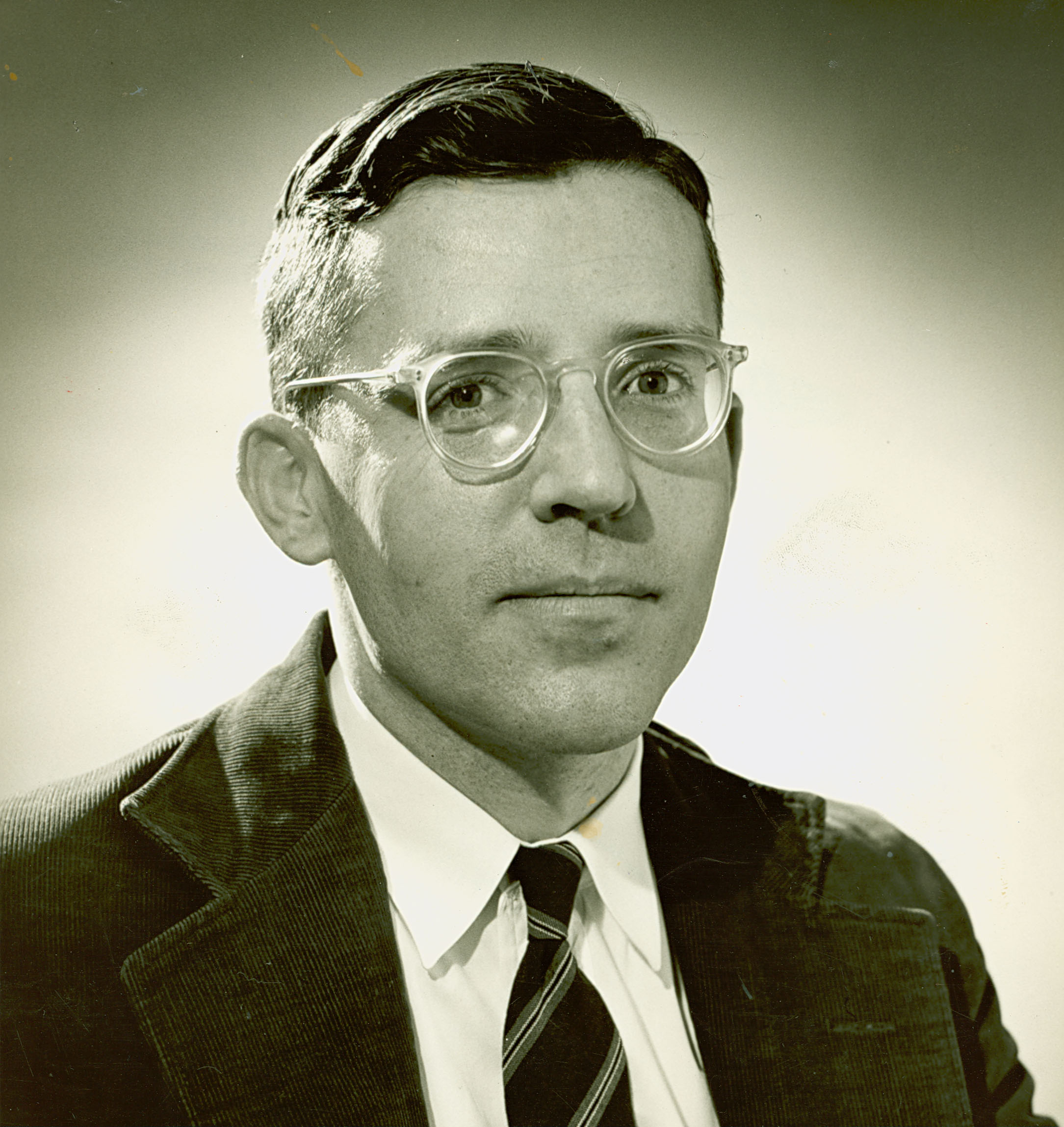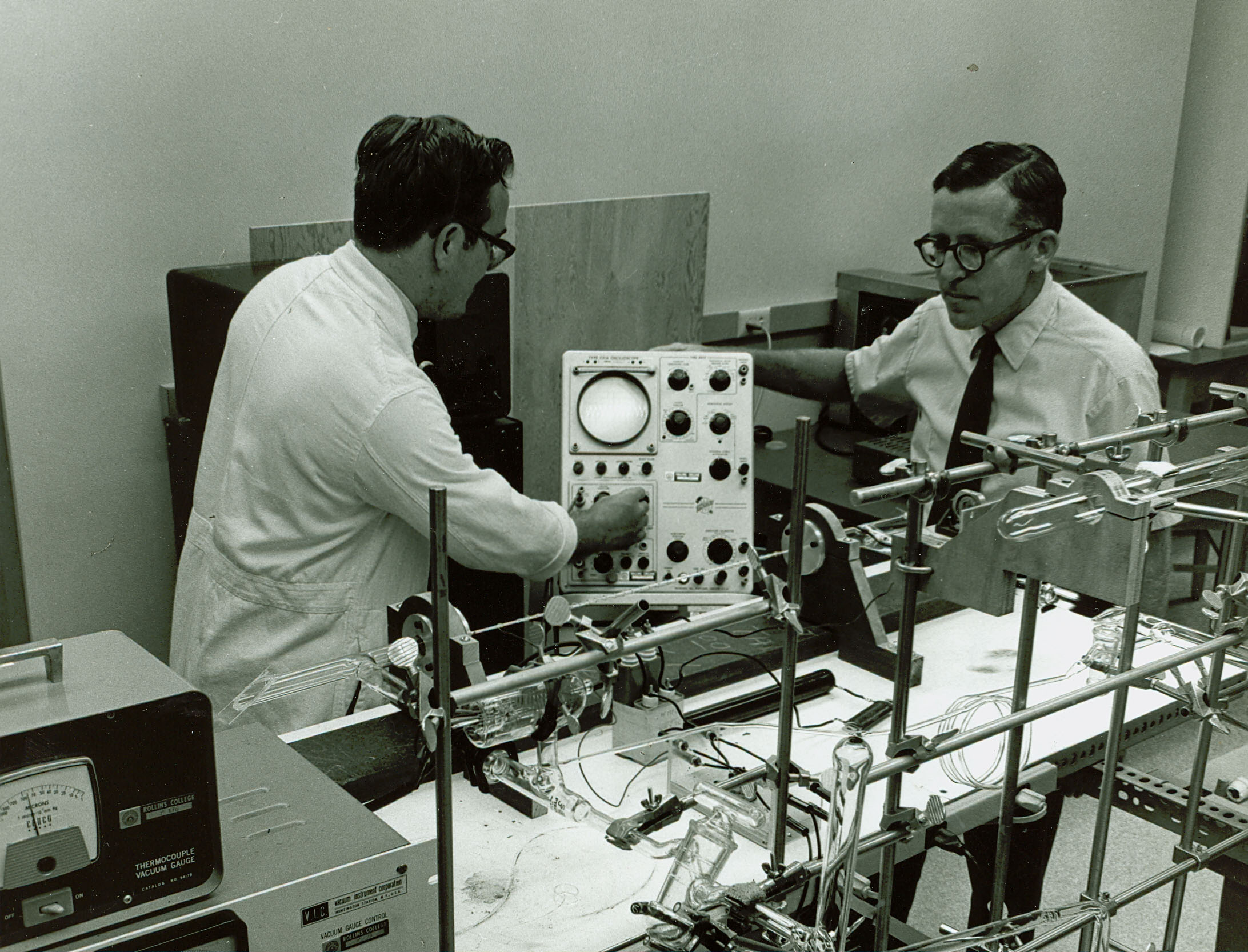Physics Professor and Master of the Science Program
|
John
Stoner Ross, born on September 28, 1925, originated in Ames, Iowa. He
received preparatory education from Greencastle High School in Indiana,
after which he enrolled in DePauw University where he received his Bachelor
of Arts degree in 1947. Ross then conducted graduate studies at the
University of Wisconsin, receiving his Masters of Science in 1948 and his
Doctorate in 1952. His fields of study included physics, mathematics, and
astronomy, with dissertation research pertaining to atomic optical
spectroscopy. In 1948, Ross married Ann Cox, with whom he had eight
children: Catharine (born 1951), David (born 1952), Martin (born 1954),
Barbara (born 1956), Gregory (born 1962), Stephen, Kevin, and Eric. Even
before completing his graduate studies, Ross found employment as a graduate
assistant and a research physicist at the ANSCO Photographic Research
Laborat In
1953, Hugh McKean invited Ross to teach at Rollins College in Winter Park,
Florida. His teaching fields included astronomy, general physics,
introduction to computers, quantum physics, and advanced laboratory. His
research interests included high-resolution atomic spectromoscopy and
self-paced course development for science majors. Ross participated in the
1975 summer Post-Keller College Workshop at Michigan State University for
the preparation of instructional models for a physics course based on
calculus. The Rollins College Research Fund provided some of the grants he
needed to conduct his studies. In 1963 he became the Director Master of
Science
In addition to teaching, Ross also published numerous papers and presented extensively. He wrote ten industrial and government reports and twelve articles on topics such as hyperfine structure and atomic isotope shifts in The Physical Review and the Journal of the Optical Society of America. His work won him various awards and honors, such as the Arthur Vining Davis Fellowship (1972), Archibald Granville Bush Professor of Science (1977 through 1980) and, along with Professor Edward Cohen, the first McKean Grant to support research in Oxford on Edmond Halley (1983). He also joined several academic and community organizations. He held memberships to the Optical Society of America, Southeastern Section of the American Physical Society, American Association of Physics Teachers, Federation of American Scientists, American Association for the Advancement of Science, Florida Academy of Sciences (as treasurer), American Association of University Professors, President of Central Florida Community Orchestra, Phi Beta Kappa, Sigma Nu, Omicron Delta Kappa. He even coached the Winter Park Soccer Club and received a position from the Boy Scouts of America Wekiwa District designating him as the chairman of the Eagle Board of Review. Ross died in 2003 at age seventy-seven from heart complications. - Angelica Garcia |
||||
| Project Home | List of Names | Rollins Archives | Olin Library | Rollins College |


